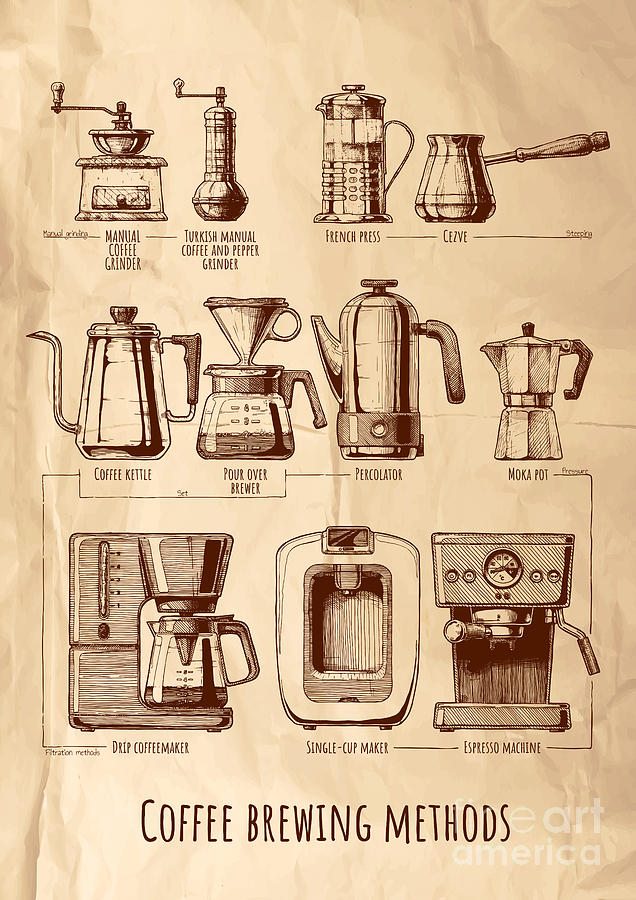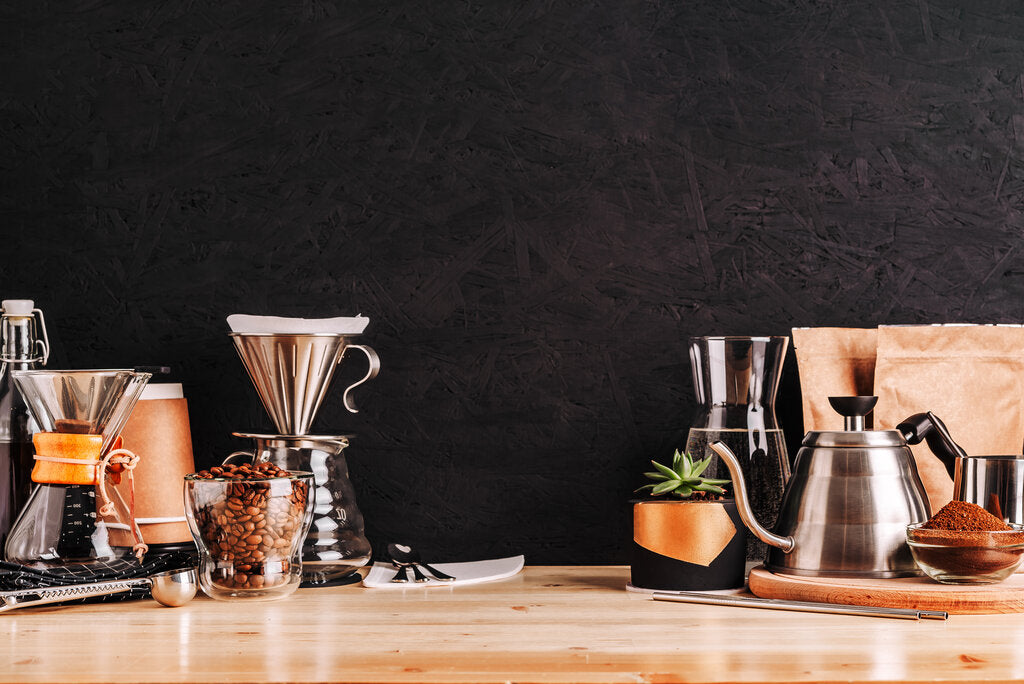Coffee Brewing Methods Debunked: From French Press to Cold Brew
Coffee Brewing Methods Debunked: From French Press to Cold Brew
Blog Article
The Science Behind Coffee Developing: Just How Temperature and Time Affect Your Drink
Understanding the scientific research behind coffee developing discloses that temperature and time are not simple variables yet essential aspects that dictate the beverage's flavor account and total top quality. The ideal brewing temperature usually falls in between 195 ° F and 205 ° F, while the duration of extraction differs substantially across various techniques. This interplay of factors can cause a mug that is either frustrating or wonderful. As we check out the subtleties of these components, the concern occurs: just how can one properly balance temperature and time to achieve that excellent mixture?
The Chemistry of Coffee Removal
The chemistry of coffee removal explores the complex processes that transform raw coffee beans right into the aromatic beverage enjoyed worldwide. This makeover largely entails the solubility of various substances existing in the beans, which are influenced by factors such as work dimension, water top quality, and the brewing technique used.
Throughout the developing procedure, warm water works as a solvent, extracting soluble substances, including caffeine, acids, lipids, and sugars, from the coffee premises. Each substance adds to the flavor profile, aroma, and body of the final drink. For circumstances, acids are accountable for appetizing and intense notes, while oils add to a rich mouthfeel.
The removal procedure is not uniform; various compounds liquify at various prices. The initial stages of developing essence acids and sugars, causing an enjoyable acidity, while extended extraction can cause anger because of over-extraction of unfavorable compounds. Comprehending these chemical communications is crucial for maximizing developing methods, as the equilibrium in between removal time and water temperature level can significantly affect the general top quality of the coffee. Eventually, grasping the chemistry of coffee extraction is vital to attaining a well-rounded and savory cup.
Perfect Developing Temperatures
Discovering the ideal brewing temperature level is essential for opening the complete potential of coffee tastes and scents - coffee brewing methods. Research indicates that the optimum array for developing coffee exists between 195 ° F to 205 ° F(90 ° C to 96 ° C) Within this array, the removal procedure efficiently dissolves the desirable soluble compounds in coffee beans, causing a balanced and savory mug
Developing at lower temperatures, such as below 195 ° F(90 ° C ), may lead to under-extraction, yielding a weak and acidic mixture with soft flavors. Alternatively, developing at temperatures going beyond 205 ° F(96 ° C) can cause over-extraction, producing a bitter and harsh preference because of the too much dissolution of unwanted compounds, such as tannins.
In addition, the excellent developing temperature can differ depending on the coffee bean kind and roast level. For instance, lighter roasts often profit from slightly higher temperatures to enhance their complicated taste profiles, while darker roasts might be better matched to lower temperature levels to reduce anger.
Eventually, preserving precision in brewing temperatures is important for achieving an unified balance that site of flavors, making sure that every cup of coffee supplies an enjoyable sensory experience.
Influence of Brewing Time
Developing time plays a pivotal role in determining the taste profile and overall top quality of coffee. Much shorter developing times can result in under-extraction, leading to a sour or weak flavor, as not enough soluble substances are liquified.
Ideal brewing time differs depending upon the method used and the work dimension of the coffee. A French press usually needs about 4 minutes, while espresso extraction is normally finished within 25 to 30 secs. It is necessary to calibrate developing time in conjunction with other variables, such as water temperature level and coffee-to-water proportion, to accomplish the wanted visit site taste account.
Understanding the impact of developing time makes it possible for coffee enthusiasts to improve their developing methods, inevitably enhancing the sensory experience of their mug (coffee brewing methods). With cautious interest to this variable, one can unlock the complete potential of the coffee, revealing its distinct characteristics and nuances
Brewing Techniques and Their Results

As an example, methods like French press and cold brew permit a much longer steeping time, resulting in a fuller body and robust taste because of enhanced extraction of oils and soluble solids. Alternatively, coffee developing uses high pressure and a much shorter extraction time, generating a focused shot that highlights intense flavors and an abundant crema.
Pour-over techniques, such as Chemex or V60, offer an even more controlled extraction procedure, allowing the brewer to control flow price and water circulation, which can improve illumination and quality. Percolation methods cycle water via the coffee grounds multiple times, leading to a stronger, typically bitter flavor.
Last but not least, using paper filters versus steel filters can additionally influence the last preference; paper filters normally yield a cleaner cup by capturing oils and great bits, while steel filters permit even more oils to go through, adding to a fuller mouthfeel - coffee brewing my blog methods. Understanding these subtleties can elevate the coffee experience dramatically
Tips for Perfecting Your Brew
A well-executed mixture can change even the simplest coffee into an impressive experience. Grind the beans simply before brewing to make the most of quality, ensuring the work dimension matches your brewing method-- coarser for French press and finer for coffee.
Water quality plays an essential function; usage filteringed system water without impurities. The optimal developing temperature varies between 195 ° F and 205 ° F(90 ° C to 96 ° C ) Also hot can swelter the coffee, while also amazing may under-extract tastes.
Timing is equally crucial. For immersion techniques, steeping for 3 to 5 minutes is optimum, whereas drip methods generally take around five minutes. Try out brew times to locate your recommended stamina.

Conclusion
In recap, the complex connection in between temperature level and time is vital in the coffee developing procedure. Recognizing these scientific concepts equips people to improve their developing strategies, ultimately leading to a much more balanced and pleasurable coffee experience.
Comprehending the science behind coffee developing discloses that temperature and time are not simple variables however critical components that dictate the beverage's taste profile and total high quality. Comprehending these chemical interactions is essential for enhancing developing methods, as the equilibrium between removal time and water temperature can considerably influence the total quality of the coffee.Brewing time plays an essential duty in establishing the taste profile and general top quality of coffee. By concentrating on these elements-- bean top quality, grind size, water temperature, soaking time, and ratio-- you can raise your coffee developing process, resulting in a regularly remarkable mug.
In summary, the detailed connection in between temperature and time is extremely important in the coffee developing procedure.
Report this page